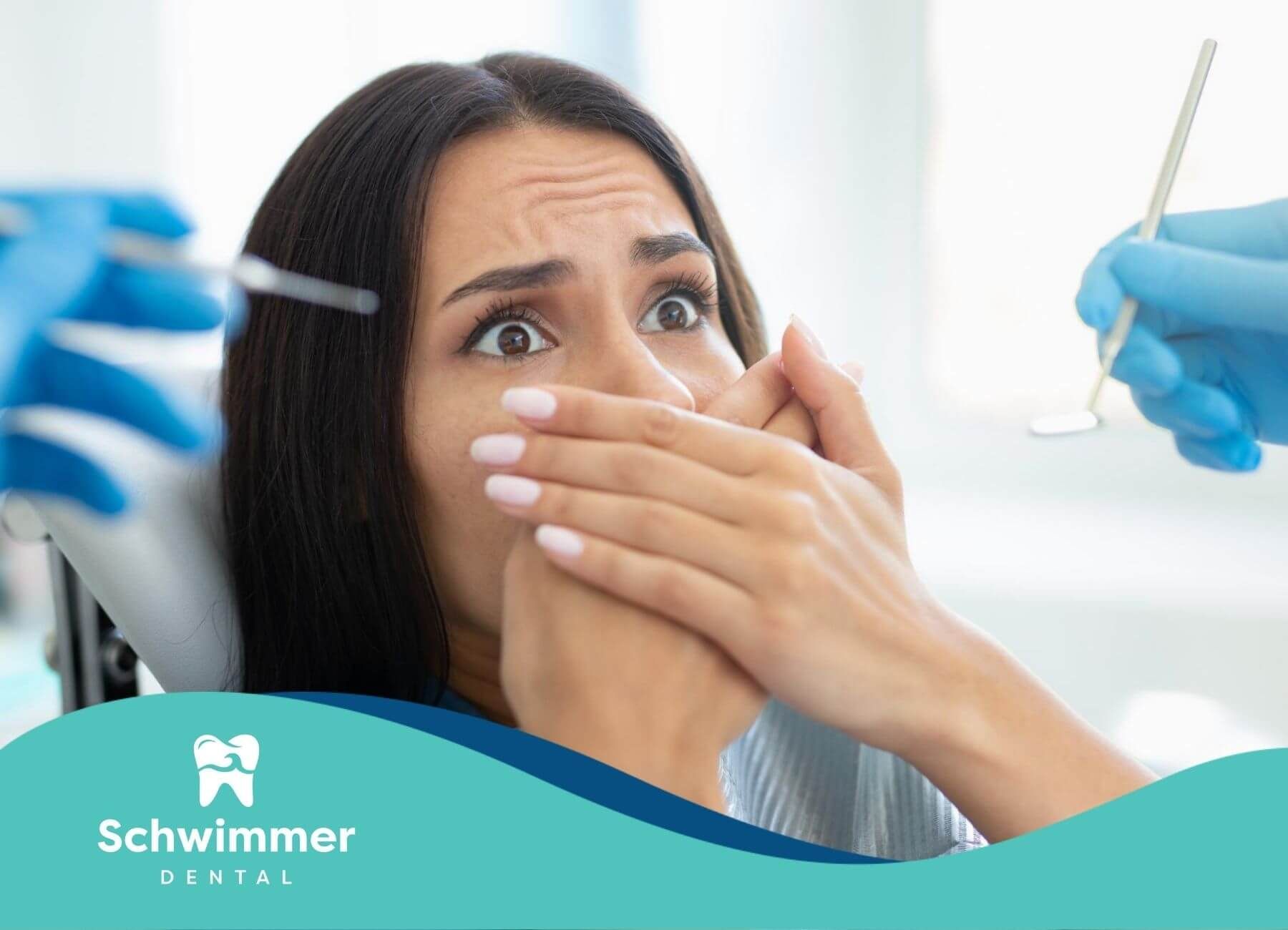Laser Dentistry for Gum Disease: A Safe and Effective Option
Understanding Gum Disease
Progression and Impact
Gum disease, also known as periodontal disease, is a common condition affecting nearly half of American adults. It progresses in stages starting from gingivitis, an inflammation of the gums caused by plaque buildup. If left untreated, gingivitis can advance to periodontitis, a more severe form of gum disease that can result in tooth loss.
The progression of gum disease involves:
- Plaque Accumulation: Daily, bacteria form a sticky, colorless plaque on the teeth.
- Gingivitis: The plaque irritates the gums, causing inflammation, sensitivity, and bleeding.
- Advancement to Periodontitis: Without treatment, the infection spreads below the gum line, causing the gums to pull away from the teeth. This can form pockets that become infected.
- Tooth Loss: The body's immune response to the infection can start to break down the bone and connective tissue holding teeth in place.
Gum disease can also lead to further health complications such as heart disease and stroke. Risk factors include smoking, poor oral hygiene, pregnancy, diabetes, and wearing dentures.
Traditional Treatments Overview
Traditional treatments for gum disease focus on removing the plaque and tartar that cause the infection. These treatments include:
- Scaling and Root Planing (SRP): This deep-cleaning process involves scraping away plaque and tartar from above and below the gum line and smoothing out rough spots on the roots of the teeth to remove bacteria.
- Flap Surgery: In more severe cases, the gums are lifted back, and tartar is removed from the deep pockets. The gums are then sutured back in place to fit snugly around the teeth.
- Bone Grafts: If the bone around the root of a tooth has been destroyed, this procedure uses fragments of the patient’s own bone, synthetic bone, or donated bone to repair the damage and promote bone growth.
- Gum Grafts: Tissue is taken from the roof of the mouth or a donor source to cover exposed roots and prevent further gum recession.
Post-treatment, patients might experience significant discomfort, bleeding, and swelling, with recovery taking several days to weeks. These procedures can be invasive and impact daily activities during the recovery period.
For a more in-depth understanding of the treatments and their implications, refer to our section on laser dentistry procedures. Additionally, for insight into the benefits of newer methods, check benefits of laser dentistry.
Advantages of Laser Dentistry
Laser dentistry presents an innovative approach to treating gum disease, offering multiple advantages over traditional methods. This approach is highly favored among patients and dental professionals for several reasons, including reduced discomfort, minimized bleeding, and faster healing.
Reduced Discomfort and Bleeding
One of the primary benefits of laser dentistry for gum disease is the significant reduction in discomfort and bleeding during and after the procedure. Traditional gum treatments often involve cutting and suturing, leading to pain and prolonged recovery times. Laser therapy, however, utilizes focused light beams to precisely target diseased tissue while sparing healthy areas. This precision minimizes trauma, resulting in less pain and quicker recovery.
- Precise Targeting: Lasers target infected areas accurately, reducing unnecessary damage to surrounding tissue.
- Minimized Bleeding: The heat from the laser promotes blood clotting, reducing bleeding.
- Reduced Pain: Lasers cause less pain due to their minimally invasive nature, often eliminating the need for anesthesia.
| Treatment Method | Pain Level | Bleeding | Need for Anesthesia |
|---|---|---|---|
| Traditional Surgery | High | High | Often Required |
| Laser Treatment | Low | Low | Rarely Required |
Faster Healing and Tissue Regeneration
Laser therapy is exceptionally effective in promoting faster healing and tissue regeneration. The laser's ability to stimulate healthy tissue growth and reduce infection risks accelerates the recovery process. Patients often experience quicker wound healing and less swelling compared to traditional treatments.
- Stimulated Tissue Growth: Lasers encourage the growth of new, healthy tissues, aiding in quicker recovery.
- Reduced Infection Risk: The laser sterilizes the treatment area, lowering the chance of postoperative infections.
- Fewer Follow-Ups: Unlike traditional methods that may require multiple follow-up visits, laser-treated patients typically need fewer check-ups due to the expedited healing process.
| Treatment Benefit | Traditional Surgery | Laser Treatment |
|---|---|---|
| Healing Time | Longer | Shorter |
| Tissue Regeneration | Slower | Faster |
| Follow-Up Visits | Multiple | Fewer |
Laser dentistry enables patients to resume normal activities more quickly compared to conventional methods. The minimal invasiveness of laser procedures reduces the need for stitches, further enhancing the recovery experience. Additionally, lasers help in blood clotting and sterilizing the area, making post-procedure care simpler and less intensive.
For more detailed information on the costs involved in laser dentistry, you can visit our article on laser dentistry cost. Additionally, continuous advancements and positive outcomes in this field are covered in our piece on laser dentistry training.
Safety and Effectiveness of Laser Dentistry
FDA Approval and Positive Outcomes
Laser dentistry has gained recognition as a safe and effective treatment for gum disease, with various dental lasers approved by the Food and Drug Administration (FDA) for periodontal therapy. These lasers have been validated through rigorous testing to ensure they meet safety standards and provide effective results for patients. This approval underscores the reliability of laser dentistry in the field of gum disease treatment.
Several studies highlight the positive outcomes associated with laser dentistry. Research indicates that this method results in reduced pain, faster recovery times, and a decreased risk of infection following procedures. Moreover, laser bacterial reduction—a non-invasive treatment—targets specific bacteria and reduces infection and inflammation without damaging surrounding tissue.
Studies and Patient Satisfaction
Several research studies have examined the effectiveness and safety of laser dentistry. For instance, diode lasers, commonly used in laser dentistry, have been shown to have minimal effects on cell attachment in the periodontal ligament. However, care must be taken with power levels exceeding 1.5 W, as they may cause severe damage to blood-coated specimens.
Patient satisfaction with laser dentistry is notably high. Many patients report favorable experiences, highlighting reduced discomfort compared to traditional surgical methods. The ability of lasers to precisely target affected areas while minimizing trauma to surrounding tissues contributes significantly to these positive reviews.
The research and positive patient feedback underscore the effectiveness of laser dentistry for treating gum disease. Laser dentistry's established safety and ability to produce positive outcomes make it a viable and attractive option for treating gum disease. For those considering this procedure, it is recommended to pursue treatment from professionals with appropriate laser dentistry training to ensure the highest standards of care.
Laser Therapy Techniques
Laser dentistry offers innovative and effective methods for treating gum disease with precision and care. Two prominent techniques in this field are the Laser-Assisted New Attachment Procedure (LANAP) and targeted laser treatment.
Laser-Assisted New Attachment Procedure (LANAP)
Laser-Assisted New Attachment Procedure (LANAP) is a cutting-edge method for periodontal therapy. This procedure uses focused laser light to target and remove infected gum tissue while preserving healthy tissue. This specificity allows for treatment without the need for scalpels or sutures, making the procedure minimally invasive.
LANAP works by emitting a concentrated beam of light that can precisely remove diseased tissue and bacteria, promoting the regeneration of healthy gum tissue. The laser also helps seal blood vessels, which minimizes bleeding and reduces recovery time.
| Aspect | LANAP |
|---|---|
| Invasiveness | Minimal |
| Need for Sutures | None |
| Recovery Time | Shorter |
This technique is effective for individuals suffering from varying stages of gum disease. It provides significant advantages over traditional surgical methods, such as reduced discomfort and quicker healing.
Targeted Treatment and Precision
Laser dentistry for gum disease uses advanced technology to ensure precise and targeted treatment. Different types of lasers are employed depending on the specific needs of the patient. Diode and Nd:YAG lasers, for instance, are commonly used for soft tissue procedures, including gum reshaping and periodontal treatment.
One of the key benefits of using laser treatment is its ability to reduce bacterial load in the mouth. Laser bacterial reduction techniques are highly effective at eliminating harmful oral bacteria like Streptococcus mutans and Porphyromonas gingivalis. These bacteria are known to cause tooth decay and gum disease. The high-intensity laser light can penetrate deep into dental plaque, reaching areas that mechanical cleaning might miss.
| Laser Type | Use Case | Benefits |
|---|---|---|
| Diode Laser | Soft tissue procedures | Reduces bleeding and discomfort |
| Nd:YAG Laser | Periodontal treatment | Effective deep cleaning |
Laser therapy's precision ensures efficient treatment, minimizing damage to surrounding tissues and enhancing overall patient satisfaction and outcomes.
Comparing Laser and Traditional Treatments
When considering treatment options for gum disease, it's important to understand the benefits and drawbacks of both laser and traditional methods. This knowledge can help in making an informed decision for effective periodontal care.
Benefits and Drawbacks
Laser Treatments
Benefits:
- Reduced Discomfort and Bleeding: Laser dentistry for gum disease is known for causing less pain and bleeding compared to traditional treatments.
- Faster Recovery: Patients experience quicker healing times due to reduced invasiveness. The laser promotes healthy tissue regeneration and minimizes the risk of infection.
- Precision: Lasers allow for targeted treatment, focusing on affected areas without harming surrounding healthy tissue.
- Convenience and Comfort: Less need for anesthesia and fewer follow-up visits contribute to an overall more convenient experience. For detailed cost comparisons, check laser dentistry cost.
Drawbacks:
- Cost: Laser treatments can be more expensive initially compared to traditional methods.
- Availability: Not all dental practices are equipped with laser technology, so accessibility may be an issue.
- Training Requirements: Dentists require specialized laser dentistry training to perform these procedures effectively.
Traditional Treatments
Benefits:
- Proven Effectiveness: Traditional methods such as scaling and root planing have been used for years and are effective in treating gum disease.
- Cost-Effective: Generally more budget-friendly compared to laser dentistry.
- Widely Available: Most dental practices offer traditional treatments.
Drawbacks:
- Discomfort: Traditional procedures may involve more pain and bleeding during and after the treatment.
- Longer Recovery Time: Healing can take longer, and there are higher chances of post-treatment infection.
- Invasiveness: Methods like surgical intervention can be more invasive, leading to longer recovery times and greater discomfort.
Effectiveness for Different Conditions
Both laser and traditional treatments are effective in managing gum disease, but they excel in different scenarios:
- Mild to Moderate Gum Disease: Laser treatments offer targeted precision, making them especially effective for patients with mild to moderate gum issues.
- Severe Gum Disease: Traditional treatments such as scaling, root planing, and sometimes surgical intervention might be necessary for treating severe cases.
| Treatment Type | Discomfort | Recovery Time | Cost | Availability | Invasiveness |
|---|---|---|---|---|---|
| Laser | Low | Fast | Higher | Limited | Minimal |
| Traditional | Higher | Longer | Lower | Widely Available | More Invasive |
By understanding the benefits of laser dentistry compared to traditional methods, individuals can make informed decisions that best suit their dental needs.
Laser Dentistry Recovery and Aftercare
Laser dentistry for gum disease offers a host of benefits, including swift recovery and minimal invasiveness. Here, we explore what patients can expect post-procedure and essential aftercare guidelines.
Minimal Invasiveness and Shorter Recovery
Laser dentistry procedures are known for their minimally invasive nature. This means that patients often experience less discomfort and reduced bleeding, which translates to shorter recovery times. Individuals are typically able to resume normal activities quickly, often within the same day of their procedure.
| Procedure Type | Estimated Recovery Time |
|---|---|
| Traditional Surgery | 1-2 weeks |
| Laser Dentistry | 1-2 days |
For medically compromised patients, such as those on blood thinners or with heart conditions, laser treatments pose fewer risks and offer safer recovery compared to traditional surgical options.
Post-Procedure Care and Follow-Up
After undergoing laser dentistry, it is crucial to follow specific guidelines to ensure optimal healing. Generally, laser therapies require less intensive aftercare compared to traditional methods. Here are some key aftercare tips:
- Gentle Oral Hygiene: Patients are advised to brush gently, avoiding the treated areas to prevent irritation.
- Dietary Adjustments: Soft foods and avoiding hot or spicy foods can help in the initial healing phase.
- Mouthwashes: Specific laser treatments may require the use of prescribed antiseptic mouthwashes.
| Care Area | Recommendations |
|---|---|
| Oral Hygiene | Gentle brushing, avoid treated areas |
| Dietary Adjustments | Soft foods, avoid hot or spicy foods |
| Mouthwashes | Use prescribed antiseptic mouthwashes |
Follow-up appointments are essential to monitor healing and ensure the effectiveness of the treatment. These check-ins may be less frequent than those required after traditional treatments but remain vital for optimal results.
Laser dentistry not only provides a quicker and more comfortable recovery process but also significantly reduces the risk of post-procedure infection. Approved by the FDA and supported by numerous studies, this approach has proven to be safe, effective, and highly satisfactory for many patients.
SOURCES:
https://pmc.ncbi.nlm.nih.gov/articles/PMC11232094/
https://www.iomcworld.org/articles/dental-lasers-illuminating-the-path-to-minimally-invasive-dentistry-100497.html
https://my.clevelandclinic.org/health/diseases/21482-gum-periodontal-disease
https://www.healthline.com/health/laser-dentistry
https://www.webmd.com/oral-health/laser-use-dentistry
https://www.intechopen.com/chapters/64030



